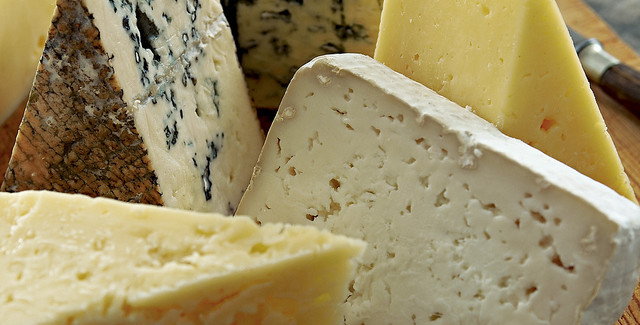
Pass the Cheese, Please!
We have already discussed the history of cheese, but is it nutritious? We talked with Best Food Facts registered dietitian Sarah Downs about the nutritional benefits of cheese and tips on how to choose the best variety for you.
What are the nutritional benefits of eating cheese?
- Cheese contains a host of important nutrients like calcium, protein, phosphorus, zinc and vitamin A. Cheese is a good source of quality protein and an excellent source of calcium, which can help to fill gaps in many American’s diets. These nutrients are also important for helping to build and maintain healthy bones and muscles.
- Cheese not only tastes great, it is convenient, portable and versatile. When paired with things like fruits, veggies, and whole grains it may help people eat more of these recommended food groups.
What is the healthiest cheese? What is the least healthy?
It really depends on the person and what they are looking for, whether it be lower calorie, lower sodium, a boost in calcium or something suitable for lactose intolerance.
Here are some options to choose from1:
- Lower sodium: Swiss, Monterey Jack, ricotta or Parmesan are best. They also make many varieties that have lower sodium options. If you are looking to lower the sodium in your diet, one tip is to choose cheese based on firmness and age. Softer, less-aged cheese typically requires less salt than harder, aged varieties.
- Lower calorie and fat options: Parmesan, Romano, part-skim mozzarella. There are many lower fat and calorie options of cottage, ricotta, cheddar, Swiss, Parmesan, colby, Muenster, provolone, or American.
- Suitable for lactose intolerance: Cheese can be an important source of calcium for those with lactose intolerance. Natural cheeses like cheddar, colby, Monterey Jack, mozzarella and Swiss have most of the lactose removed when the curds are separated from the whey during the cheese-making process, leaving a product with very small amounts of lactose.
- Boost calcium intake: Swiss, cheddar, ricotta, mozzarella, Monterey Jack, Gouda, Mexican blend, or colby.
Ultimately when it comes to cheese, just about any type can fit in any diet — the key is moderation. That’s why it’s important to read the nutrition facts labels and be mindful of serving sizes. I like to use cheese as an addition or seasoning to my meals instead of making it the main ingredient.
Reference:
- National Dairy Council and Innovation Center for U.S. Dairy. Cheese & Nutrition. Available at: http://www.nationaldairycouncil.org/SiteCollectionDocuments/education_materials/cheese/Health%20Professional%20Cheese%20Nutrition%20Brochure%20Final.pdf. Accessed September 2, 2015.
Photo: “Cheese” by Skånska Matupplevelser is licensed under CC BY ND.


























